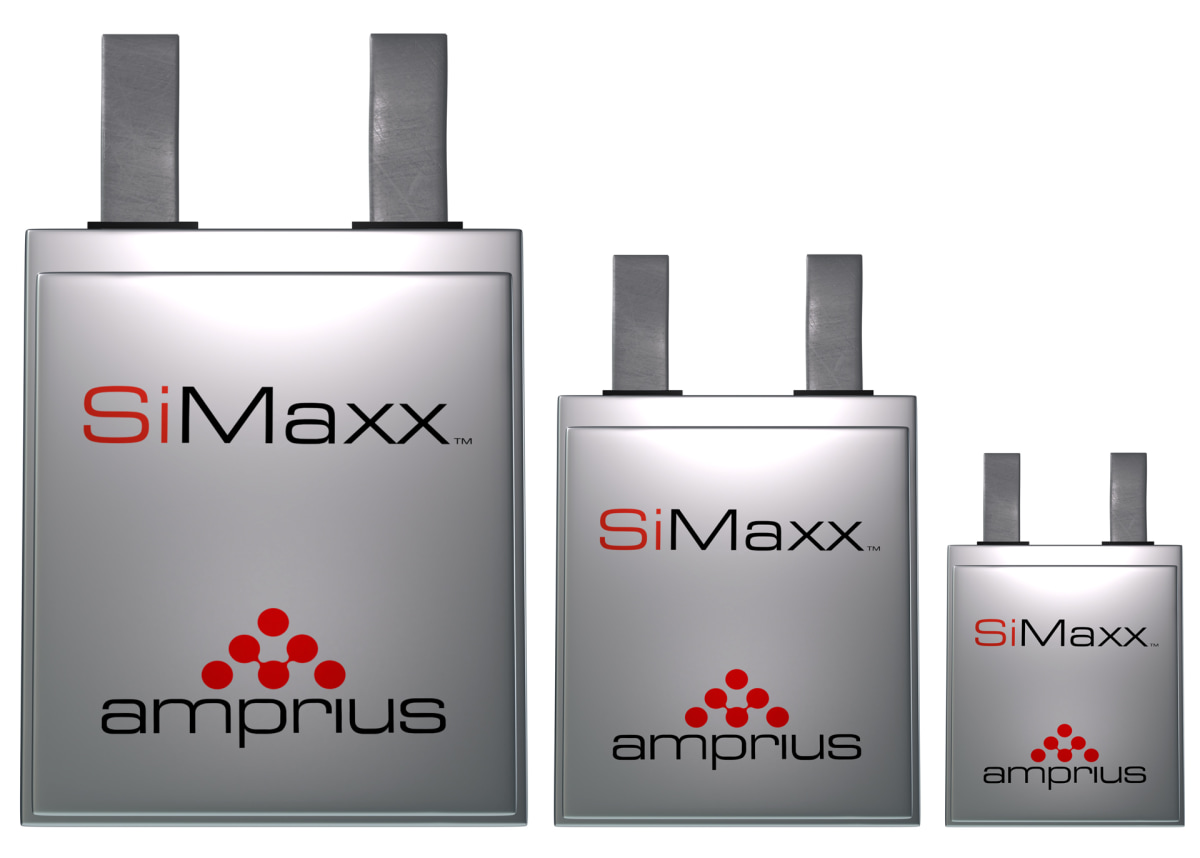- | 9:00 am
This new battery material could fix EVs’ major problems—including helping them work in the cold
Amprius is focused on making batteries for electric aviation, but eventually, its advancements will make their way to the ground.

The future of transportation is set to be electric—not only for cars, but for everything from delivery trucks to airplanes. But before that’s a reality, technology still has to solve some pain points around issues like charging and batteries.
One downside of EV batteries is that they don’t always fare well in extreme weather. That was made clear this winter when EV drivers in Chicago faced charging struggles, plummeting ranges, and reduced battery life during a below-zero cold snap. There are behavioral changes drivers can make to adapt to this reality. But still, it’s a fact that lithium-ion batteries have their limits in extreme cold and heat—as well as other limitations around range and weight.
Battery maker Amprius may have a solution, thanks to the use of silicon in its battery cells. Though Amprius is focusing first on making batteries for electric flight, it has plans to eventually move into electric vehicles, and its battery advancements could mean all forms of electric transportation benefit.
WHY ARE EV BATTERIES SO BAD IN EXTREME WEATHER?
Most electric and hybrid vehicles use lithium-ion batteries for good reason: They’re energy-dense, relatively lightweight, and have the ability to last for 10 to 20 years. They also tend to have a good performance in high and low temperatures—but in real extremes, like below freezing cold or over-100 degree heat, this changes.
The basic components of a battery are the positive cathode, the negative anode, a separator, and an electrolyte—a liquid solution that transfers the ions back and forth, and which, in the case of lithium-ion batteries, is the lithium. When a battery is fully charged, all the lithium is in the anode. When it’s not charged, all the lithium moves to the cathode.
Ionel Stefan, CTO of Amprius, says batteries are like people: They like mild temperatures, and they don’t like to be forced to go too fast or too slow. Chemical reactions are constantly happening in a battery, and at extremely high temperatures, those reactions happen more quickly, which can age a battery faster. Charging is bad in hot temperatures because it speeds up those reactions even more, and that all works to make the battery and its materials less stable.
In cold temperatures, the opposite happens: Reactions in the battery slow down, reducing the amount of charge it holds and also its range. Behavior changes can help handle this; in Norway, a cold country that’s also a leader in EV adoption, drivers have learned how to make adjustments, like warming up the battery first or charging overnight. Those are easier to do, though, because of things like more prevalent at-home charging stations. And even with these adjustments, EVs can still be less convenient in the cold.
Stefan describes the typical cold battery reaction as the electrolyte material getting thicker or more viscous, and so it doesn’t conduct ions at the same rate. “What’s also damaging at low temperatures [is] if you try to charge the battery, it not only doesn’t accept much power, but there’s a danger that instead of the lithium going into the anode to be stored . . . the lithium will just pile on top [of the anode],” he says.
This can form what are called “dendrites,” a collection of metal, that, if it grows long enough, can reach back to the cathode, causing an electrical connection between the two that short-circuits the battery. Short-circuiting can lead to battery failures and even fires.

HOW DOES SILICON HELP BATTERIES?
Amprius, which spun out of Stanford University, makes “ultra-dense” batteries by using silicon instead of graphite in a battery’s anode. Graphite has been the go-to for battery anodes since the 1990s, in part because it’s a readily available material and is energy dense. But silicon has 10 times the storage capacity. The only problem is that as silicon absorbs lithium, it also expands in volume—by up to 300%. “That’s not a property that you want in a battery, that it’s expanding and contracting as it charges and discharges,” Stefan says.
Lots of battery makers are working to incorporate silicon without the downsides (Group14 and Sila Nanotechnologies are two examples). Some have mixed silicon with graphite or carbon, to get more of the energy density without as much swelling. Amprius, meanwhile, created a 3D structure that accommodates that swelling. “You can try to force it not to happen, or you can allow it to happen but make it invisible,” Stefan says.
Silicon can improve batteries in cold weather: because it has a slightly higher voltage than graphite, it’s safer to charge at lower temperatures, Stefan says; it won’t create those dendrites that could short-circuit a battery. The electrolytes may still be sluggish in the cold, but it won’t be a safety issue, and as the battery warms up, charging will speed up. And because silicon-anode batteries are more energy dense, that means less energy is lost in the cold weather. While most batteries average an energy loss of 40% in cold temperatures, Amprius has reduced that to about 20%.
The use of silicon also means a battery could have longer range and charge faster. Last year, an independent test lab verified that Amprius’s battery had an energy density of 500 Wh/kg; Tesla’s batteries, for comparison, have an energy density around 269 WH/kg. Amprius says its batteries can charge from 0 to 80% in six minutes, and provide a run time twice that of graphite battery cells.
Amprius’s first customers are in aerospace and electric flight, because that’s where energy density really matters, Stefan says; electric flight batteries need to be as light as possible, while still providing enough power. In November, Amprius secured purchase orders from three electric aviation companies. But advancements for lighter, more energy dense batteries will eventually trickle down to ground transportation—like cars and freight trucks.
Electric cars are heavier than internal combustion engine vehicles, which also affects battery range. For most small cars, this isn’t a big issue—EV makers are focused on making them more affordable first; making batteries, and thus cars, lighter isn’t a primary concern. But for trucks, especially large freight vehicles that carry cargo and need to travel longer distances, it can be a problem. Adding more batteries just adds more weight. “You cannot add 10,000 pounds of battery, when [a truck’s] capacity is somewhere around 40,000-50,000 pounds of cargo,” Stefan says. “Every pound matters there . . . That’s where you see they try to make some cargo trucks but the range is really low.” This was also an issue with the Ford F150 Lightning—drivers have said that once they hitched up a trailer to their truck, the milage tanked. More energy-dense batteries means they’ll be lighter, too.
Stefan acknowledges that there’s other battery technologies out there, but to him, silicon is the clear answer. “I think the next generation of electric vehicles is going to have at least a little bit of silicon in the anode,” he says. But there’s one more issue: scaling up manufacturing. Amprius’s batteries are already available for planes, but the company doesn’t expect its batteries to be available for ground vehicles until around 2027.








































